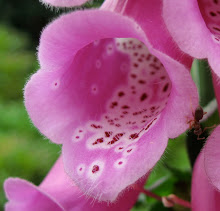I used the Creative Commons image search to find the following image of an ant sipping from a drop of sugar-water:
 This lovely macro can be useful in the biology classroom in many ways. Firstly, the picture can be used as an entry into the nature of pollination. The sugar-water the ant is sipping was placed there by the photographer, but it brings to mind nectar and the "exchange of services" between plants and their pollinators. The true nectar (or enticing scent) is likely to be located at the base of the flower, ensuring that the ant brushes the pollen-laden strands on its way to a sugary reward.
This lovely macro can be useful in the biology classroom in many ways. Firstly, the picture can be used as an entry into the nature of pollination. The sugar-water the ant is sipping was placed there by the photographer, but it brings to mind nectar and the "exchange of services" between plants and their pollinators. The true nectar (or enticing scent) is likely to be located at the base of the flower, ensuring that the ant brushes the pollen-laden strands on its way to a sugary reward.
Secondly, it shows the surface tension of a water droplet and gives a sense of water's cohesion. At the scale of an ant, the three dimensional nature of water droplets in more vivid and real than what students ordinarily experience. The immediacy and reality of biological events can be conveyed very powerfully with images, and this is especially effective when they demonstrate things that students can't observe without the help of special technologies. This could be something on a small scale, such as the gorgeous diversity of diatom shells, or a large scale, like deforestation. It could be processes slowed down in time, like a basilisk lizard running across the surface of the water, or it could be processes speeded up, such as the amazing time-lapse movies seen in David Attenborough's "The Private Life of Plants".
Finally, these ways of improving our perceptions, seeing the detail and intricacy and "big picture" of life and living systems increase student interest and often instill a sense of wonder and respect for the things normally 'beneath' our notice, or beyond it. For students, this can translate into a greater overall connectedness to the world around them and the ability to think more creatively, from a broader perspective, and with greater insight.
Thus visual imagery is an indispensible support for my curricular content.

Love the image. I think I might use it when teaching about surface tension and hydrogen bonding. It brings home to the students the reality and importance of these phenomena, given the relevant scale.
ReplyDelete